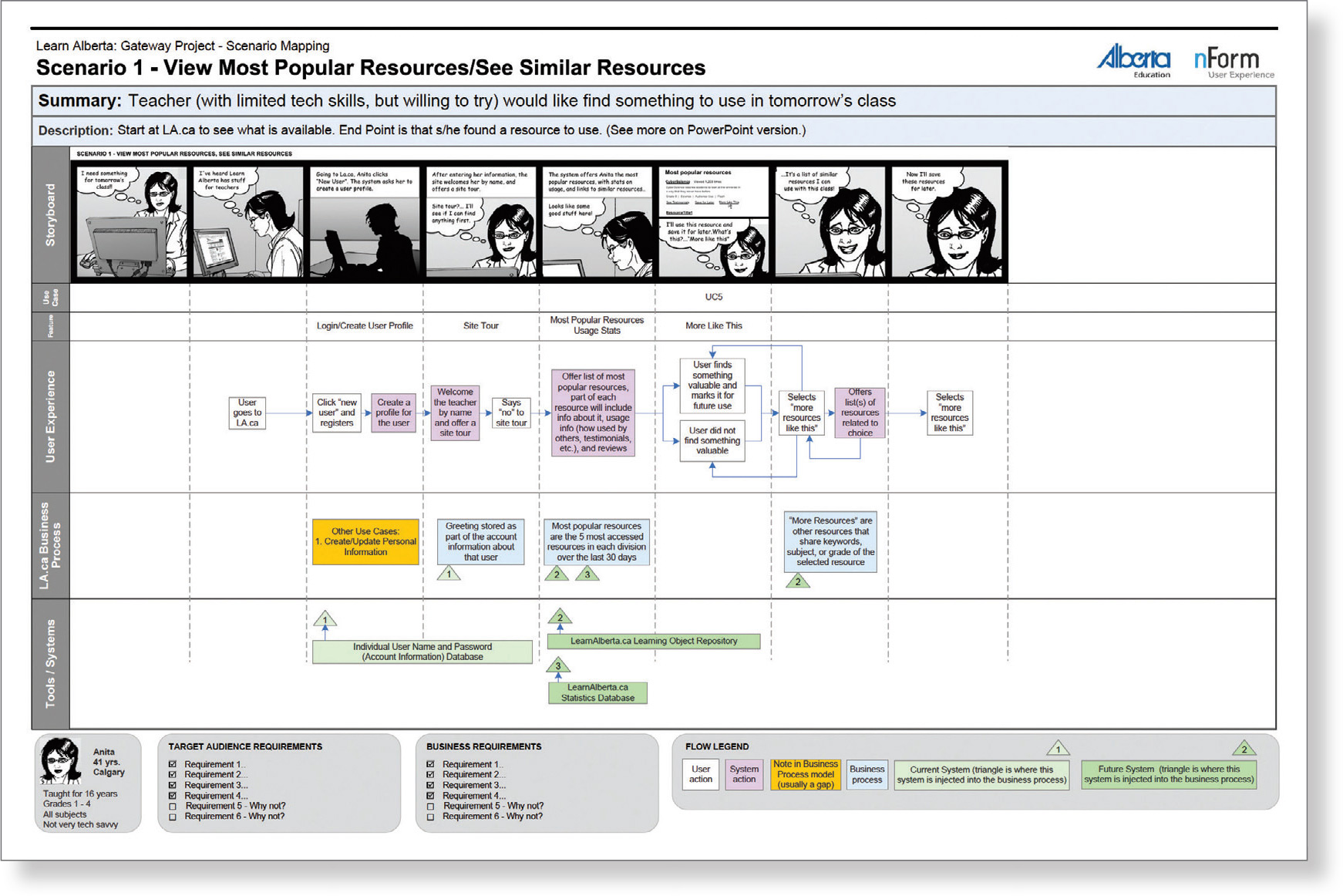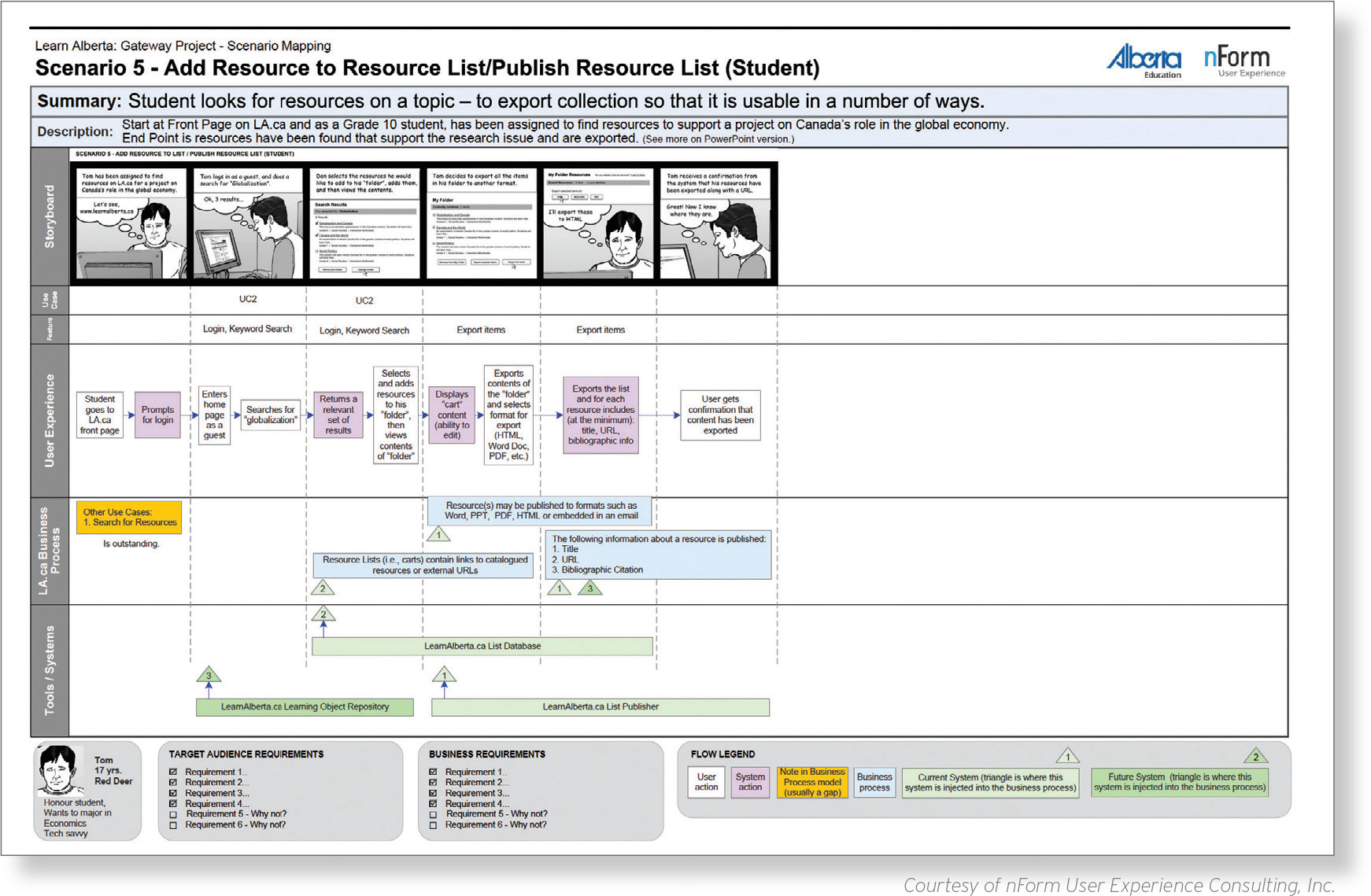RESEARCH DELIVERABLE
72 Scenario Description Swimlanes

Scenario description swimlanes are deliverables that visualize the activities of multiple actors in a flow of events and prove that a holistic perspective is greater than the sum of its parts.1
Scenario description swimlanes can benefit any project where several processes or actors have to come together to shape the outcome of the same flow of events. Its direct, visual nature provides a bird’s-eye view of all of the moving parts within a story, and serves to get everyone on a project team on the same page, regardless of individual technical abilities. Because swimlanes represent multiple points of view, it is a powerful conversation starter and reminder that the success of the system depends on multiple components working together.
Within a given project, multiple scenario description swimlanes should be created, each focused on its own specific user story. It is important to represent each story independently, as each story will have each of the following elements in its own “swimlane”:
Storyboard lane: The top lane is the most visually powerful element of the document, and captures the events in a user story in a visual way. It is this top lane that draws the most attention from executives and stakeholders, and can be used to facilitate discussions about the user experience without getting too technical. Comics, photographs, illustrations, or sketches can be used to communicate the story.
User Experience lane: Using a flowchart of boxes and arrows, this lane depicts the story shown in the storyboard lane with more detail and insight into the process of the user experience.
Business Process lane: The business logic that supports the user story and user experience is flowcharted in the third lane. It provides the information supplied by business analysts in terms of required business processes that facilitate the steps of the user experience.
Tools and Systems lane: The back-end technology that is involved to support the user actions and business goals is documented here, and is provided by technical team members such as engineers and database administrators.
Scenario description swimlanes are best used for application-based products or process reengineering projects versus marketing/content-heavy projects. The information used to build the deliverable comes from workshops and interviews with the different groups that are represented in the swimlanes above. By visually connecting the goals and requirements of different actors into an overarching user story, scenario description swimlanes serve to remind us how and why we are solving a specific problem at a very high-level “macro” perspective as well as a detailed “micro” view.
1. Swimlanes are an activity diagram of the Unified Modeling Language (UML), which seeks to show activities occurring at the same time but that are performed by different actors. Yvonne Shek at nForm adapted the UML activity in 2007, and created the scenario description swimlanes. In 2008, nForm submitted the deliverable to the IA Summit’s Wall of Deliverables, where it won the People’s Choice award. It has also been integrated into the EightShapes Unify collection of deliverables: http://unify.eightshapes.com


Courtesy of nForm User Experience Consulting, Inc.
